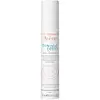What's inside
What's inside
 Key Ingredients
Key Ingredients

 Benefits
Benefits

 Concerns
Concerns

 Ingredients Side-by-side
Ingredients Side-by-side

Water
Skin ConditioningPropylene Glycol Dicaprylate/Dicaprate
EmollientCetearyl Alcohol
EmollientIsohexadecane
EmollientNiacinamide
SmoothingButylene Glycol
HumectantDimethicone
EmollientPolymethyl Methacrylate
Glycerin
HumectantBenzoic Acid
MaskingBHT
AntioxidantButyrospermum Parkii Butter
Skin ConditioningCaprylic/Capric Triglyceride
MaskingCetearyl Glucoside
EmulsifyingDicaprylyl Carbonate
EmollientDisodium EDTA
Disodium Phosphate
BufferingMyrtus Communis Leaf Extract
PerfumingPhenoxyethanol
PreservativePolyacrylate-13
Polyisobutene
Polysorbate 20
EmulsifyingPotassium Phosphate
BufferingSerenoa Serrulata Fruit Extract
Skin ConditioningSodium Cetearyl Sulfate
CleansingSodium Hydroxide
BufferingSorbitan Isostearate
EmulsifyingStearyl Glycyrrhetinate
Skin ConditioningTocopherol
AntioxidantXanthan Gum
EmulsifyingWater, Propylene Glycol Dicaprylate/Dicaprate, Cetearyl Alcohol, Isohexadecane, Niacinamide, Butylene Glycol, Dimethicone, Polymethyl Methacrylate, Glycerin, Benzoic Acid, BHT, Butyrospermum Parkii Butter, Caprylic/Capric Triglyceride, Cetearyl Glucoside, Dicaprylyl Carbonate, Disodium EDTA, Disodium Phosphate, Myrtus Communis Leaf Extract, Phenoxyethanol, Polyacrylate-13, Polyisobutene, Polysorbate 20, Potassium Phosphate, Serenoa Serrulata Fruit Extract, Sodium Cetearyl Sulfate, Sodium Hydroxide, Sorbitan Isostearate, Stearyl Glycyrrhetinate, Tocopherol, Xanthan Gum
Water
Skin ConditioningCaprylic/Capric Triglyceride
MaskingIsododecane
EmollientIsodecyl Neopentanoate
EmollientPentylene Glycol
Skin ConditioningPropylene Glycol
HumectantGlycerin
HumectantGlyceryl Stearate
EmollientPEG-100 Stearate
Polymethyl Methacrylate
1,2-Hexanediol
Skin ConditioningAlgin
MaskingArachidyl Alcohol
EmollientArachidyl Glucoside
EmulsifyingBehenyl Alcohol
EmollientBHT
AntioxidantCaprylyl Glycol
EmollientCaprylyl Glycol Linseedate
AntimicrobialCarbomer
Emulsion StabilisingDisodium EDTA
Parfum
MaskingHydrogenated Polyisobutene
EmollientHydroxyethyl Acrylate/Sodium Acryloyldimethyl Taurate Copolymer
Emulsion StabilisingPapain
Skin ConditioningPEG-7 Trimethylolpropane Coconut Ether
EmulsifyingPotassium Sorbate
PreservativeCI 17200
Cosmetic ColorantRetinal
Skin ConditioningSodium Hydroxide
BufferingSorbitan Isostearate
EmulsifyingWater, Caprylic/Capric Triglyceride, Isododecane, Isodecyl Neopentanoate, Pentylene Glycol, Propylene Glycol, Glycerin, Glyceryl Stearate, PEG-100 Stearate, Polymethyl Methacrylate, 1,2-Hexanediol, Algin, Arachidyl Alcohol, Arachidyl Glucoside, Behenyl Alcohol, BHT, Caprylyl Glycol, Caprylyl Glycol Linseedate, Carbomer, Disodium EDTA, Parfum, Hydrogenated Polyisobutene, Hydroxyethyl Acrylate/Sodium Acryloyldimethyl Taurate Copolymer, Papain, PEG-7 Trimethylolpropane Coconut Ether, Potassium Sorbate, CI 17200, Retinal, Sodium Hydroxide, Sorbitan Isostearate
 Reviews
Reviews

Ingredients Explained
These ingredients are found in both products.
Ingredients higher up in an ingredient list are typically present in a larger amount.
BHT is a synthetic antioxidant and preservative.
As an antioxidant, it helps your body fight off free-radicals. Free-radicals are molecules that may damage your skin cells.
As a preservative, it is used to stabilize products and prevent them from degrading. Specifically, BHT prevents degradation from oxidation.
The concerns related to BHT come from oral studies; this ingredient is currently allowed for use by both the FDA and EU.
However, it was recently restricted for use in the UK as of April 2024.
Learn more about BHTThis ingredient is an emollient, solvent, and texture enhancer. It is considered a skin-softener by helping the skin prevent moisture loss.
It helps thicken a product's formula and makes it easier to spread by dissolving clumping compounds.
Caprylic Triglyceride is made by combining glycerin with coconut oil, forming a clear liquid.
While there is an assumption Caprylic Triglyceride can clog pores due to it being derived from coconut oil, there is no research supporting this.
Learn more about Caprylic/Capric TriglycerideDisodium EDTA plays a role in making products more stable by aiding other preservatives.
It is a chelating agent, meaning it neutralizes metal ions that may be found in a product.
Disodium EDTA is a salt of edetic acid and is found to be safe in cosmetic ingredients.
Learn more about Disodium EDTAGlycerin is already naturally found in your skin. It helps moisturize and protect your skin.
A study from 2016 found glycerin to be more effective as a humectant than AHAs and hyaluronic acid.
As a humectant, it helps the skin stay hydrated by pulling moisture to your skin. The low molecular weight of glycerin allows it to pull moisture into the deeper layers of your skin.
Hydrated skin improves your skin barrier; Your skin barrier helps protect against irritants and bacteria.
Glycerin has also been found to have antimicrobial and antiviral properties. Due to these properties, glycerin is often used in wound and burn treatments.
In cosmetics, glycerin is usually derived from plants such as soybean or palm. However, it can also be sourced from animals, such as tallow or animal fat.
This ingredient is organic, colorless, odorless, and non-toxic.
Glycerin is the name for this ingredient in American English. British English uses Glycerol/Glycerine.
Learn more about GlycerinThis ingredient is also known as PMMA. It is a polymer microsphere, composed of tiny, perfectly spherical particles formed from repeating units.
In cosmetics, PMMA is mainly used to give a soft or blurring effect. The transparent particles are able to scatter light and help reduce the appearance of fine-lines and imperfections.
PMMA is also able to enhance the texture of products by add a smooth feel.
Learn more about Polymethyl MethacrylateSodium Hydroxide is also known as lye or caustic soda. It is used to adjust the pH of products; many ingredients require a specific pH to be effective.
In small amounts, sodium hydroxide is considered safe to use. However, large amounts may cause chemical burns due to its high alkaline.
Your skin has a natural pH and acid mantle. This acid mantle helps prevent harmful bacteria from breaking through. The acid mantle also helps keep your skin hydrated.
"Alkaline" refers to a high pH level. A low pH level would be considered acidic.
Learn more about Sodium HydroxideSorbitan Isostearate is an emulsifer and cleaning agent. It is created from isostearic acid and sorbitol.
As an emulsifier, Sorbitan Isostearate prevents oils and water from separating.
Due to its isostearic acid base, it may not be safe for Malassezia or fungal acne.
Learn more about Sorbitan IsostearateWater. It's the most common cosmetic ingredient of all. You'll usually see it at the top of ingredient lists, meaning that it makes up the largest part of the product.
So why is it so popular? Water most often acts as a solvent - this means that it helps dissolve other ingredients into the formulation.
You'll also recognize water as that liquid we all need to stay alive. If you see this, drink a glass of water. Stay hydrated!
Learn more about Water